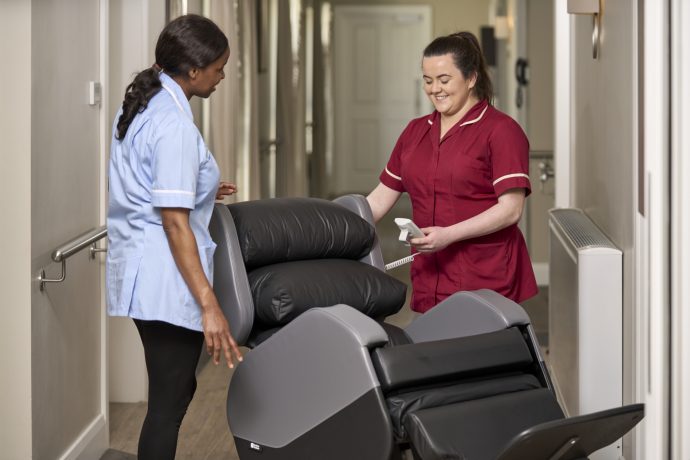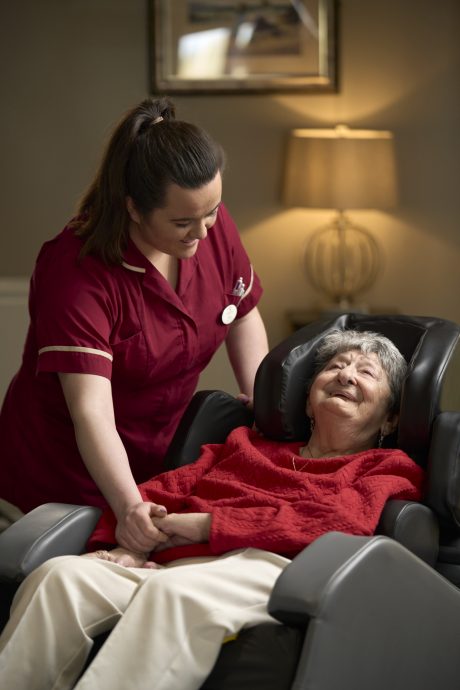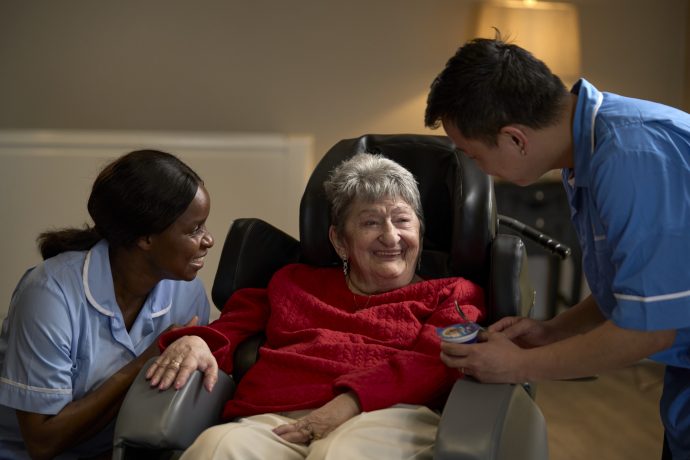
2nd September 2025
Empowering clinicians with expert-led training on clinical seating, pressure injury prevention, and best practice.
Learn More

Let our online product finder guide you through our simple steps to choose the chairs that best meet your patient’s needs.
Seating Solution FinderThe Envelo cushion provides excellent pressure redistribution and comes as standard on all Seating Matters chairs, meeting the clinical needs of most clients.
Explore Envelo RangeSeating Matters specialises in clinical, therapeutic seating solutions designed to improve patient care and safety, offering products for pressure injury prevention, postural support, and mobility assistance in healthcare settings.
Learn MoreDiscover how Seating Matters has transformed lives with our innovative seating solutions - read our inspiring customer success stories now!
Customer StoriesUsed in academia, in clinical practice and with caregivers around the world to guide their practices around specialist seating.
Download Free HandbookFalls are a common occurrence in care facilities and hospitals and cause unnecessary suffering and pain. Fortunately there are methods to reduce falls risk - this article shares evidence based tips to support you*.

Accidental falls from chairs and wheelchairs places huge strain on the patient, their family and on healthcare budgets in dealing with and treating these preventable injuries.

Image ©Seating Matters. References [1.] [2.] [3.]
Falls and fall related injuries most commonly concern elderly members of the population but also patients suffering from low mobility due to different types of muscular and neurological diseases which impair their strength, balance and sense of space. [4]
Falls can also happen as a result of medication which patients might need which can sometimes result in feeling dizzy and off balance.
Those patients who may have low strength, be unsteady on their feet or require extra assistance during sit to stand transfers are more at risk. Patients suffering from conditions such as Huntington’s Disease or Alzheimer’s Disease, with poor memory and cognitive impairment might impulsively try to stand up when seated and therefore are a high risk category. The correct seating solution can keep these patients safer, more secure and less at risk, and will reduce falls risk.

When a patient has an unnecessary fall from their chair there are a large number of consequences that can result from this physically, mentally and economically.
1. Injury/Hurt – i.e. broken bones, bruising, open wounds.
2. Pressure injuries - Repeated sliding out of a chair can cause shear which can contribute to an incidence of pressure injuries.
3. Delayed rehab – Injuries from falls can affect rehabilitation of the patient – slowing down progress and increases time spent in hospital and usually spent on bed rest.
4. Confidence/Dignity – When a patient suffers a fall, this can really damage their confidence in themselves and they will be less likely to move around as much, and therefore may become even more immobile and dependent on others for assistance and help. This affects their dignity and pride and results in them being less independent.
5. Manual handling risks – The need for constant repositioning due to a patient sliding down their chair means an increase in staff time and an increase risk of injury due to excess manual handling requirements.
6. Expenses incurred – Care homes/hospital have additional costs to fulfil, performing operations, purchasing new equipment not to mention increased staff time to aid manual repositioning and treating injuries.
“Don’t hurt me, heal me. Try as we might, people do come to harm in ways that can be prevented. Hospital acquired infections, injuries from falls, bed sores and medical errors are examples of preventable harm that can occur every day in healthcare organisations."
– Dr Peter Pisters [4]
A common reason why patients end up sliding out of, or falling out of chairs is down to a lack of or an inadequate seating assessment. This results in a patient being put in a chair which typically doesn’t accommodate the four following factors:
1. Loading the body.
2. Accommodating hamstrings.
3. Accommodating hip flexion.
4. Loading of the feet on an appropriate footplate.[5]
A proper seating assessment with prescription of a chair tailored to a patients height, leg length and clinical needs whilst also supporting posture and function, can drastically reduce risk of falls and sliding. The following functions are key considerations:
1. Back angle recline: This function enables the back angle of the chair to be opened out to accommodate a fixed hip angle and prevents the patient being pulled forward in their seat.
2. Negative angle leg rest: This function accommodates those with tight hamstrings and enables them to be fully loaded into the chair and fully supported with their feet able to sit firmly behind the knee.
3. Adjustable footplate: This is necessary in order to load the feet as 19% of a person’s body weight goes through the feet when seated.[6]
4. Adjustable seat angle recline: Enables lowering the pelvis into the chair and creates a stable base of support for the person when seated.
5. The support from additional adaptations:
6. Seat depth: The ability to adjust seat depth in a chair is a great function for a multi-user environment allowing one chair to suit many different body shapes. For patients with long legs, the ability to adjust the seat depth is essential to properly load the femurs into the chair.
7. Anterior leg rest function/Riser Function: Can help an individual slowly come to a standing position whilst being fully supported.
A thorough seating assessment and an investment in the correct, supportive equipment, can drastically improve the quality of life for patients at risk of falls and sliding from chairs.
Not only that, but the additional benefits to the caregiver and the cost savings from reduced need for additional treatment and time saved repositioning cannot be underestimated. Perhaps the most important takeaway, is the reassurance to family members and caregivers that their patient or loved one is safe and secure from risk of injuries due to preventable falls.
Our helpful customer service team and knowledgeable Seating Specialists are available to provide training on how choosing the correct chair can help prevent falls. We offer demonstrations and chair trials (subject to availability) in Ireland, UK, Australia, USA, Canada and parts of Europe.
If you or your organisation would like to learn more about how therapeutic seating can help reduce preventable injuries and falls for those in your care please get in touch.
Sign up to our mailing list to get practical tips and latest research delivered to your inbox!
Take the next step to achieve clinical excellence and a 24 hour package of care for patients.

Arrange a free, no obligation assessment of clinical, therapeutic seating.

Schedule a call at a time that suits you to speak with our experts.

Download your copy of The Clinician's Seating Handbook
*Note - the purpose of this blog is to give an overview of the product with some tips to consider on its use. This is not intended to be a substitute for professional or medical advice, diagnosis, prescription or treatment and does not constitute medical or other professional advice. For advice with your personal health or that of someone in your care, consult your doctor or appropriate medical professional.
[1.] Centers for Disease Control and Prevention. (2020). Retrieved May 7, 2022. Cost of Older Adult Falls. https://www.cdc.gov/falls/data...
[2.] Florence, C. S., Bergen, G., Atherly, A., Burns, E., Stevens, J., & Drake, C. (2018). Medical Costs of Fatal and Nonfatal Falls in Older Adults. Journal of the American Geriatrics Society, 66(4), 693-698.
[3.] NHS. (2022). Retrieved May 7, 2022. Falls: Applying All Our Health. https://www.gov.uk/government/publications/falls-applying-all-our-health
[4.] Hospital News. (2015). Retrieved September 20, 2022. Don't Hurt Me Heal Me. Be Nice to Me. https://issuu.com/hospitalnews...
[5.] Tierney, M., 2021, The Clinician's Seating Handbook, 6th Ed., Northern Ireland: Seating Matters.
[6.] Staas, W.E., Cioschi, H.M., 1991. Pressure sores: a multifaceted approach to prevention and treatment. Western Journal of Medicine, 154: 539-544.

2nd September 2025

15th August 2025

15th August 2025